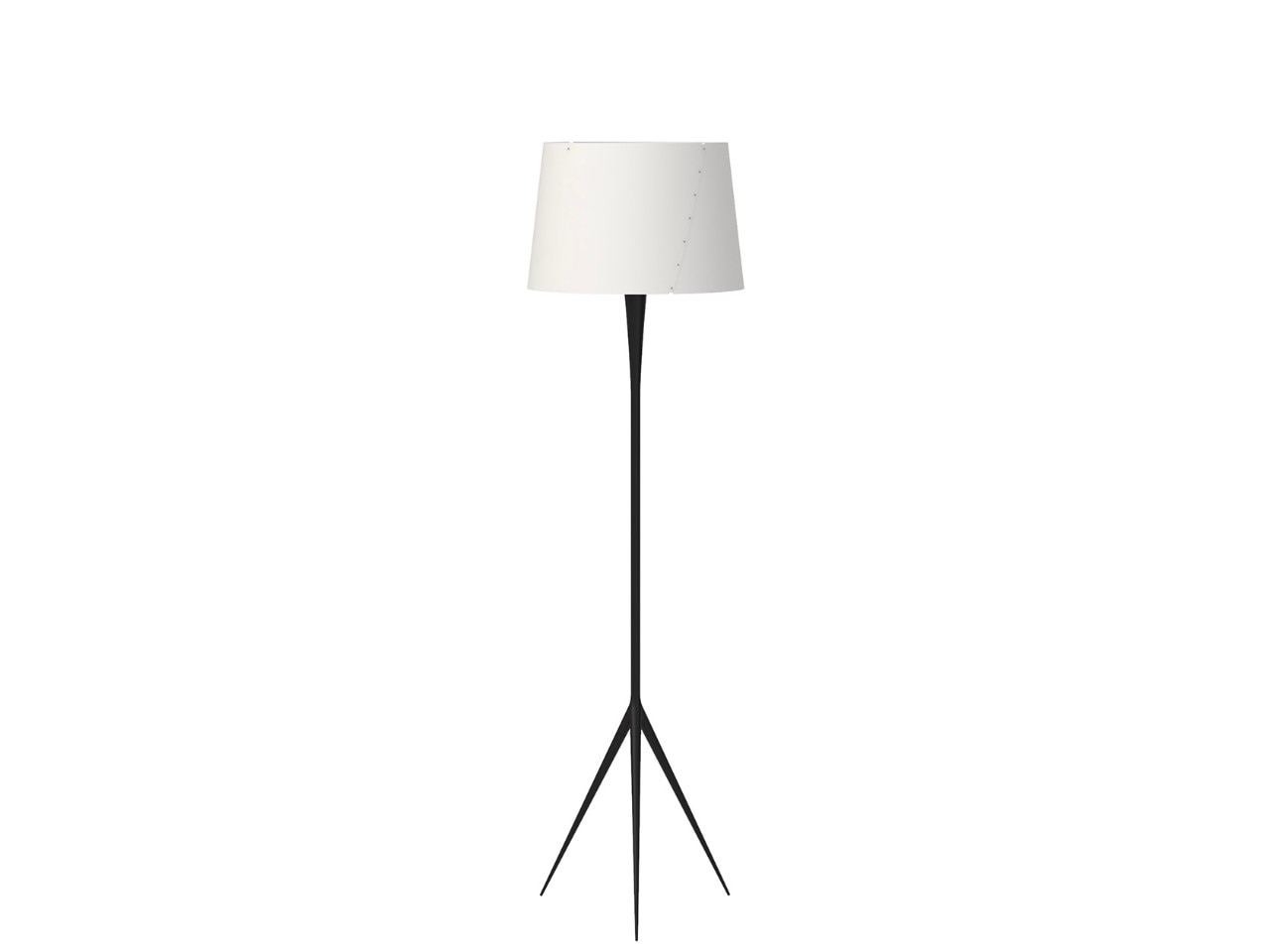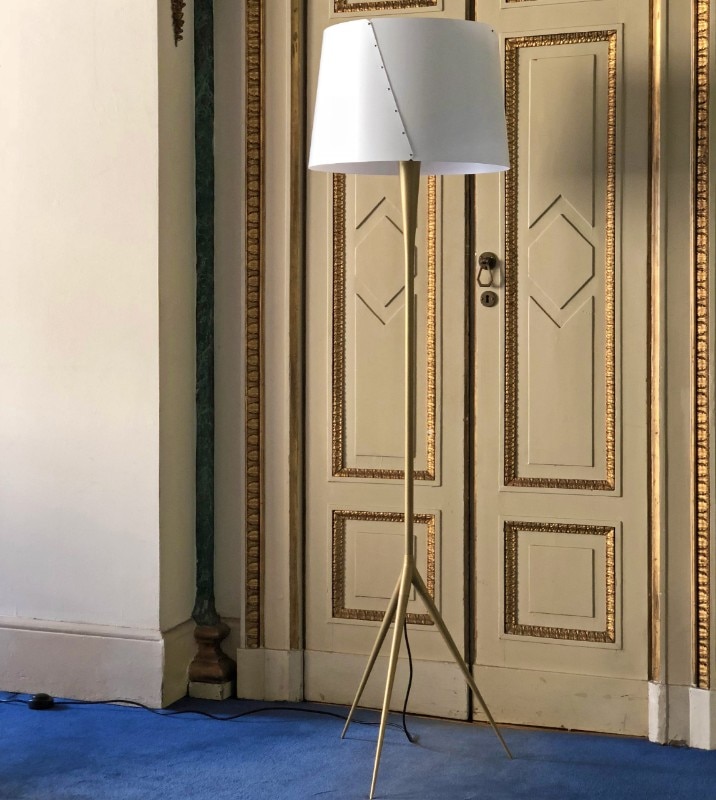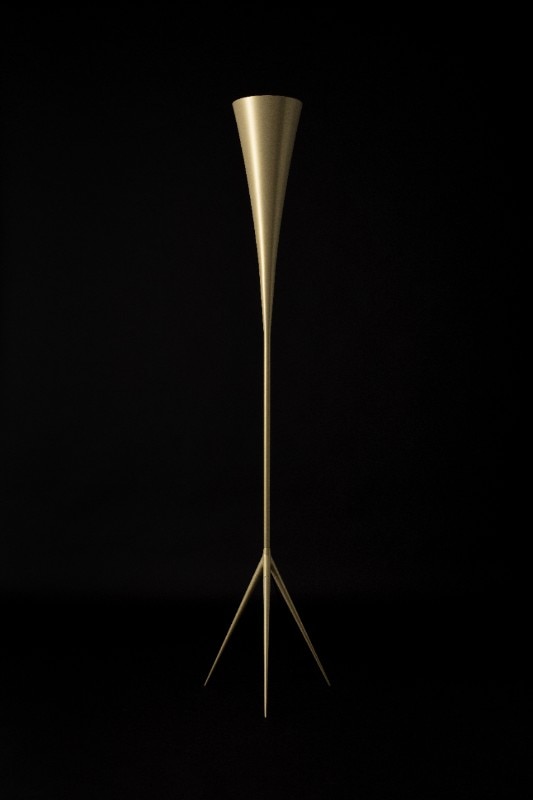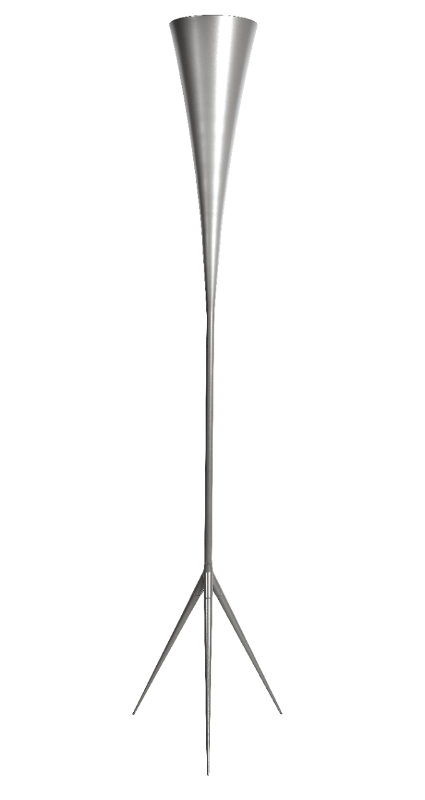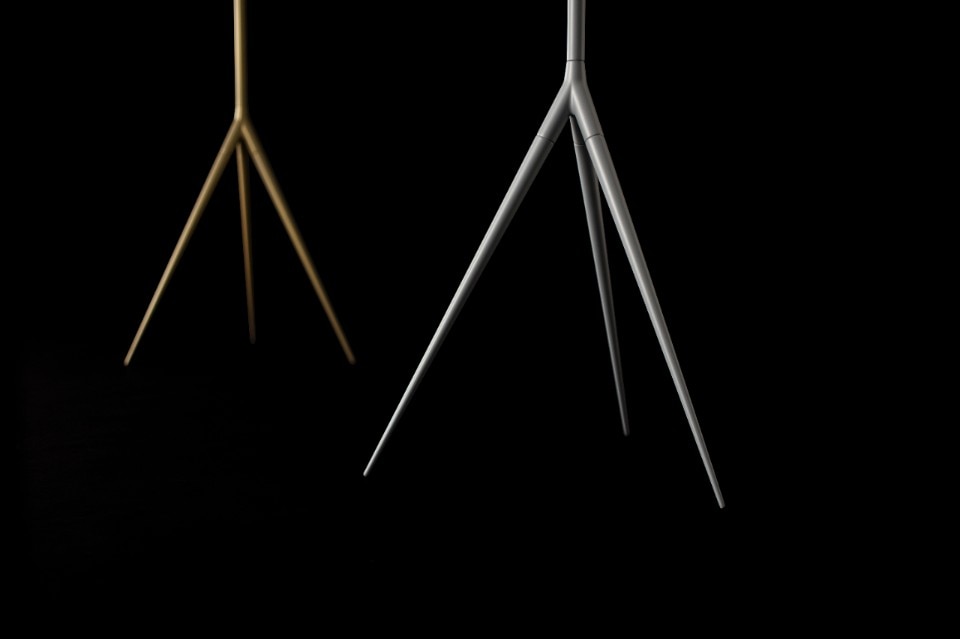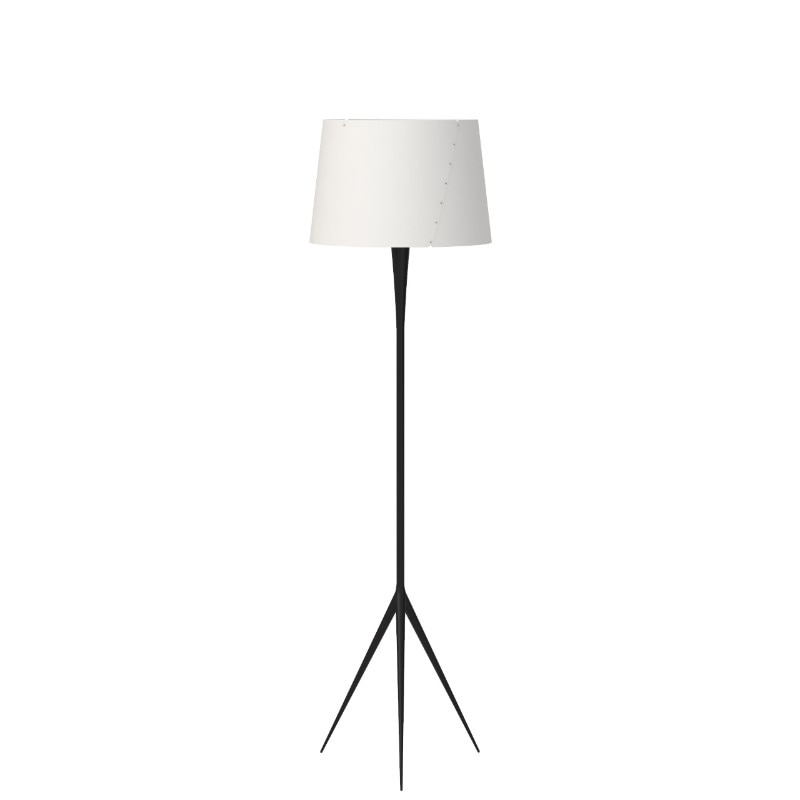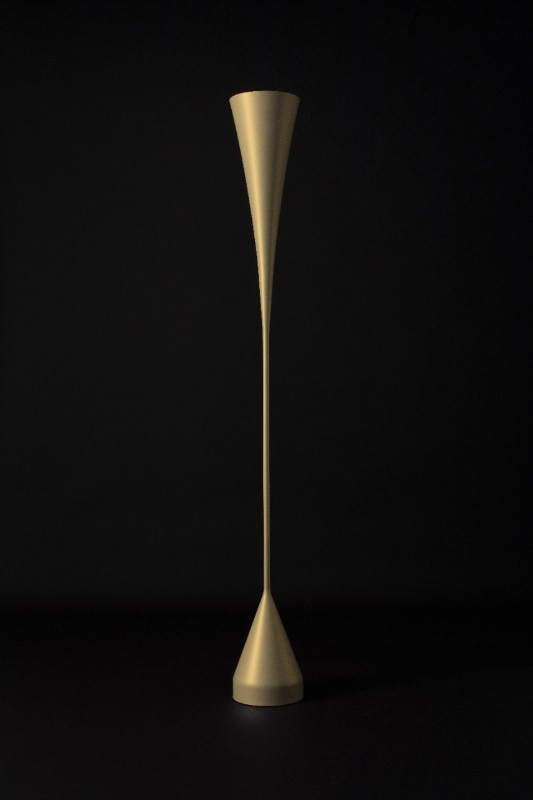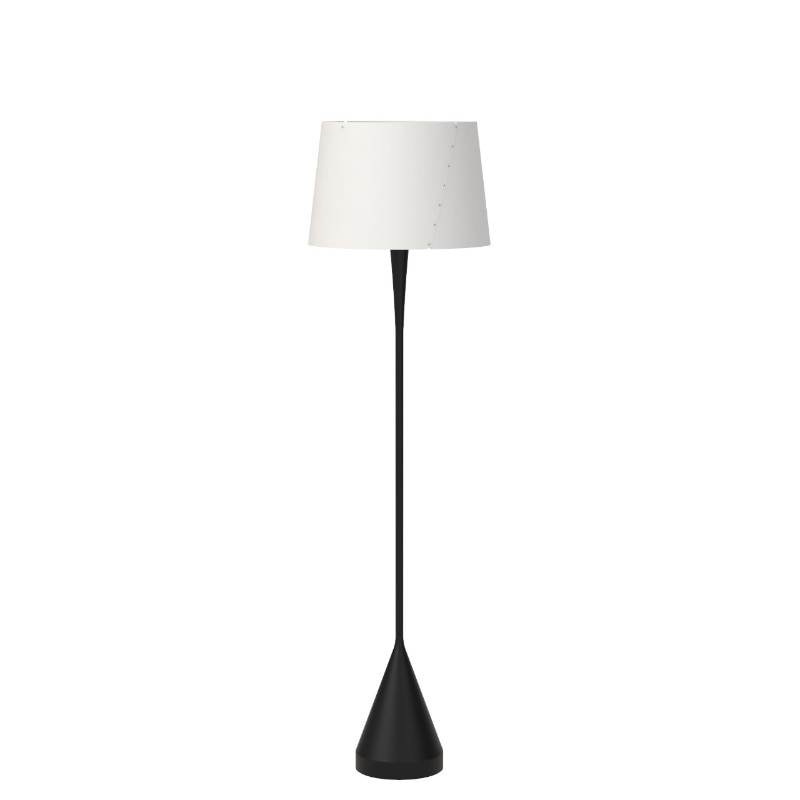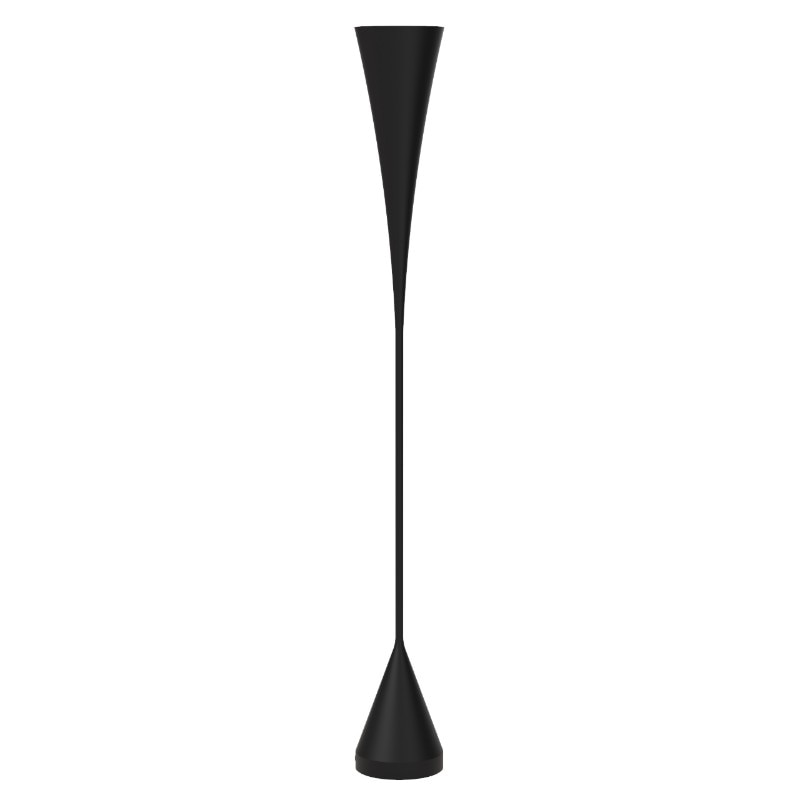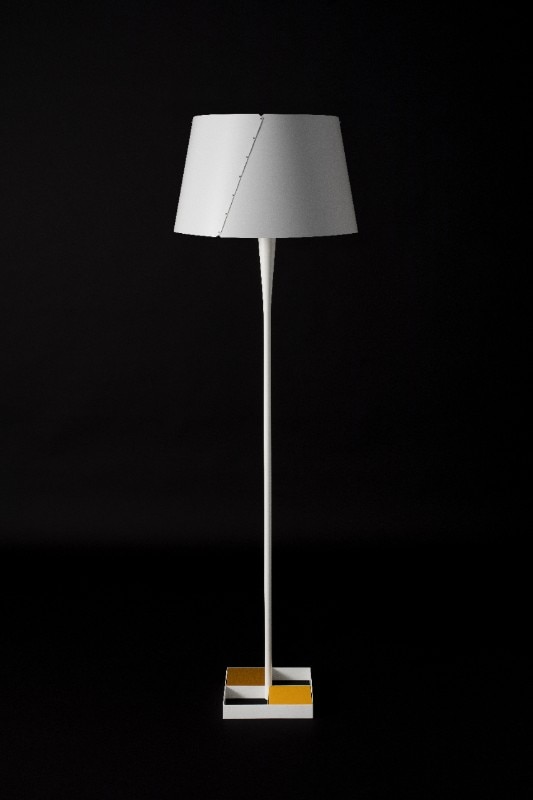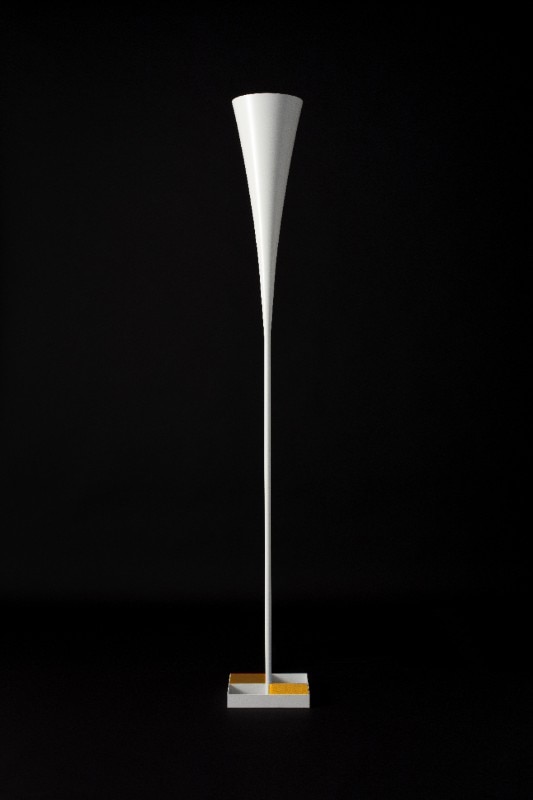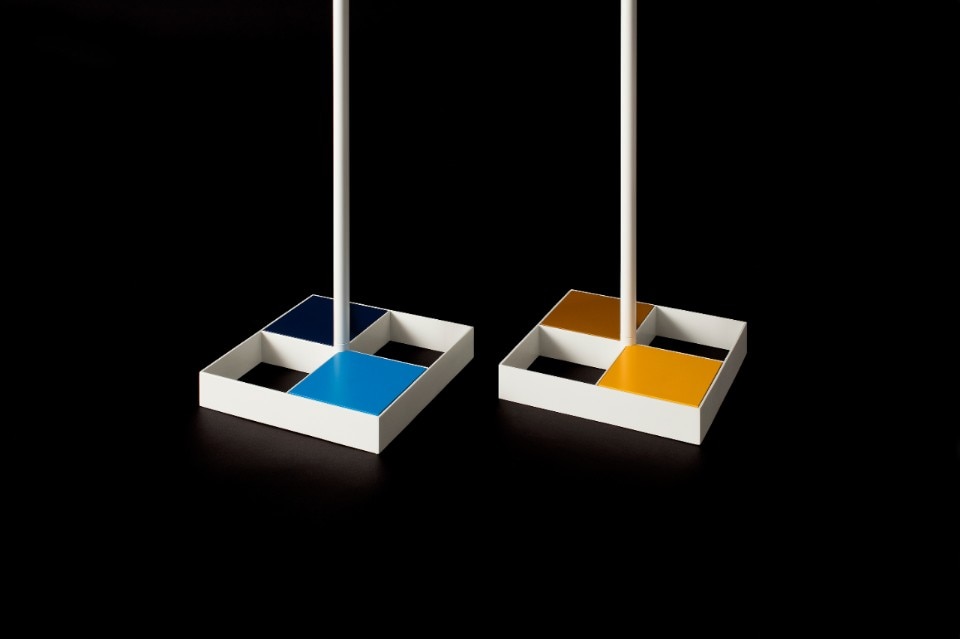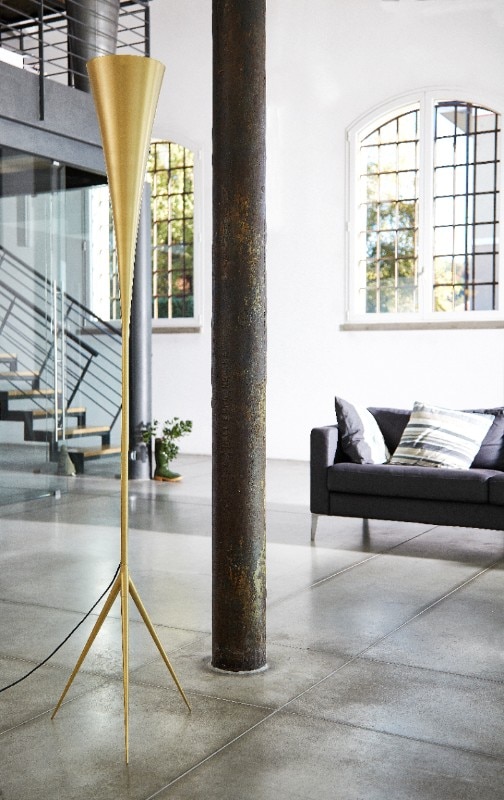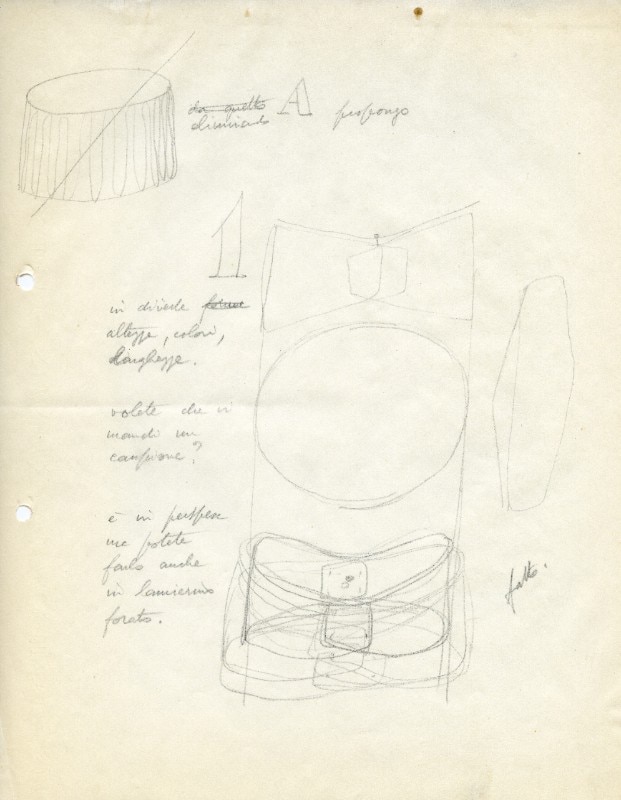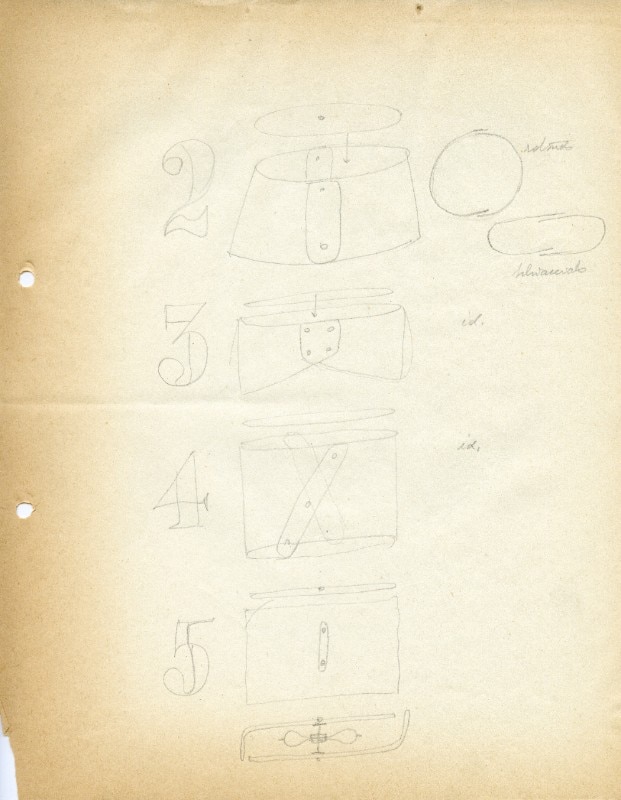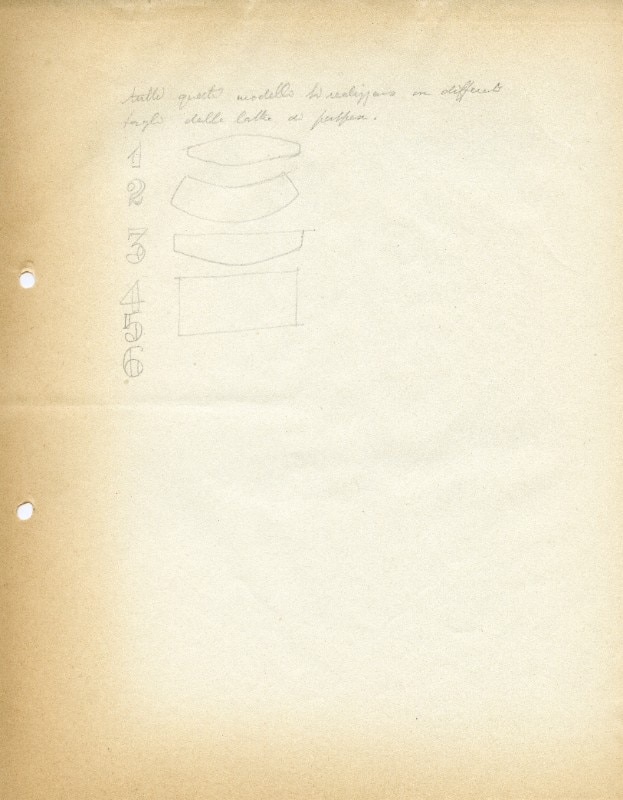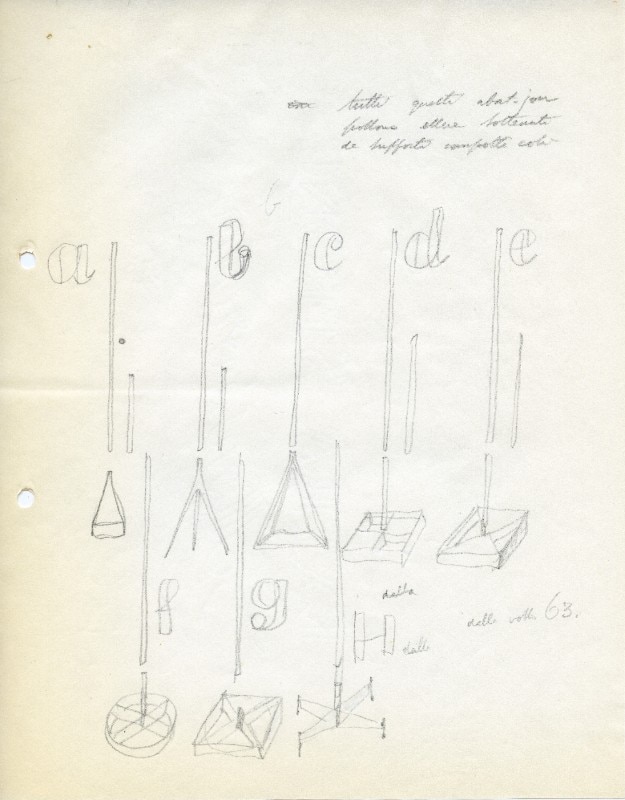This article was originally published on Domus 1059, July and August 2021.
”Here are the various lamps.” The words are handwritten in italics, on a sheet with holes in a folder. He had the idea buzzing about in his head and gave shape to it on paper, drawn with subtle yet confident pencil lines.
Gio Ponti would pass from the sketch of a spoon to the design of a skyscraper or the pattern of a fabric. With his typical creative energy, in 1955 he produced a set of drawings embodying his thoughts about a lamp, a light source that could change its appearance. The Milanese designer had in mind different versions of a floor lamp: a tubular stem, long or short, supported the shades in the form of cylinders or truncated cones, while the base rose on supports of different shapes: tripods, pyramids or squares.
The series was probably conceived for a company abroad, perhaps in America, and reveals Ponti’s working method, his aptitude for promoting his work.
Instead of offering the client company a finished product, he seduced it with a range of ideas, drawing a palette of shapes, colours and solutions from his repertoire of designs, which in the 1950s was becoming more receptive to fusions between the arts.
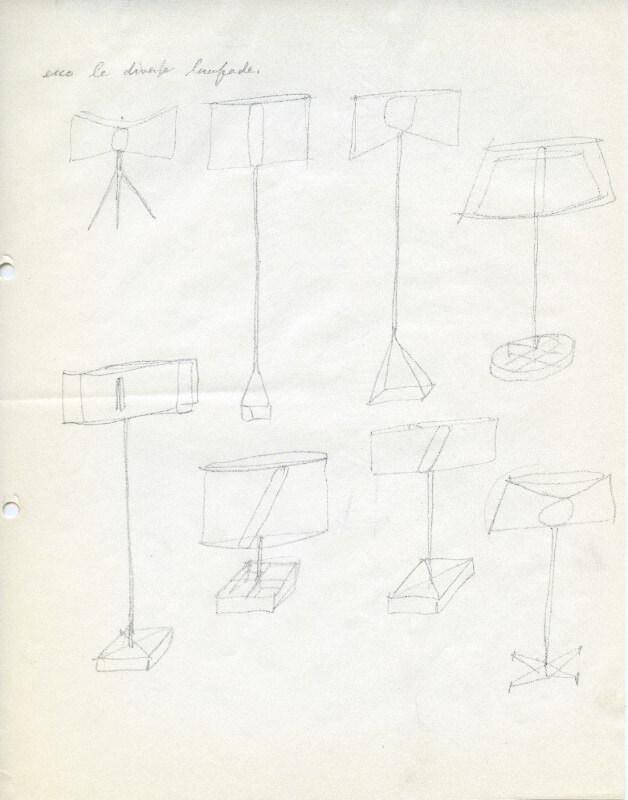
For this customisable lamp, Ponti imagined different components, with legs that were thin, long and square, like the facets of diamonds. It includes a square base that plays on voids and solids, creating the effect of light and shade that the architect sought in his buildings’ facades, using coloured tiles to enliven the architecture and make it shimmer in the sunlight.
Filippo Cristina believed in the project, which until 2017 had only been a series of documents left in the archives. He is the founder of TATO, a furniture and lighting company based in Novara and interested in Italian design from the 1950s, a period rich in experiments, forms and production processes.
Working with the Gio Ponti Archives, the company studied the drawings and produced De-lux, a series of lamps with various combinations. The light source, conical or with a lampshade, can be combined with three different bases (tripod, conical or inlaid).
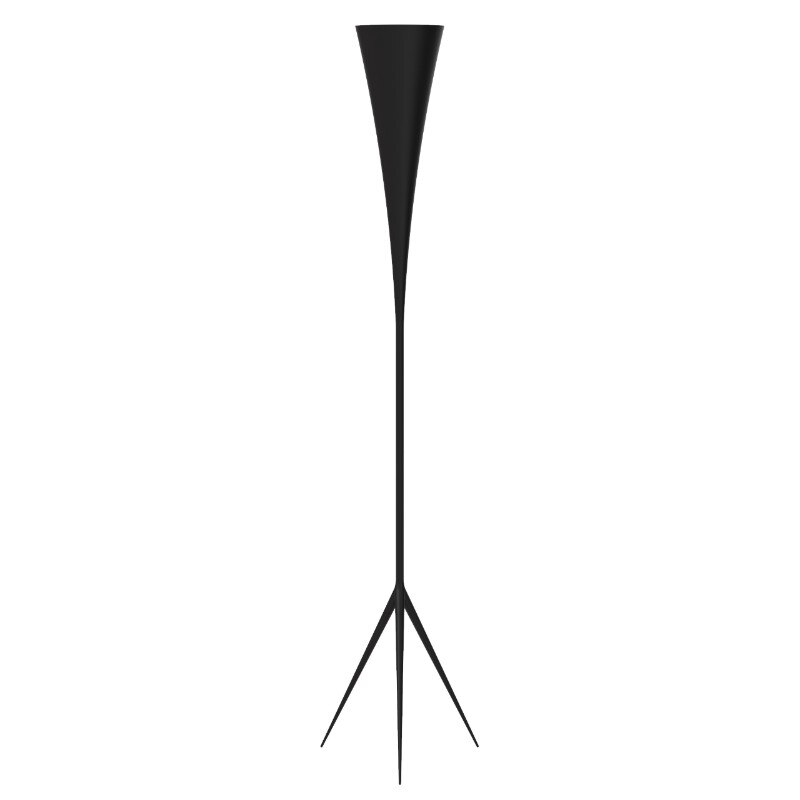
The inlaid version is covered with coloured ceramic tiles, inspired by the ones used in the Hotel Parco dei Principi in Sorrento, where Ponti expressed his love for this material. And this was always his working method, with design elements becoming buildings and the principles of architecture embodied in objects.


